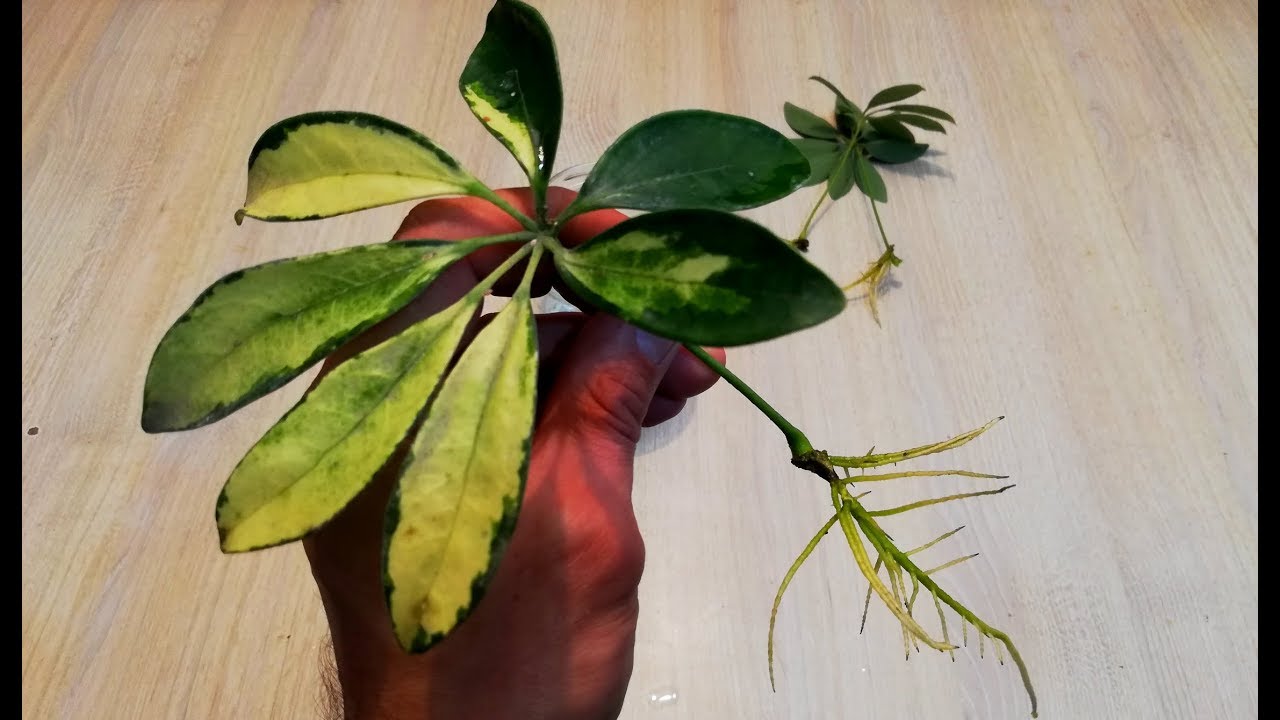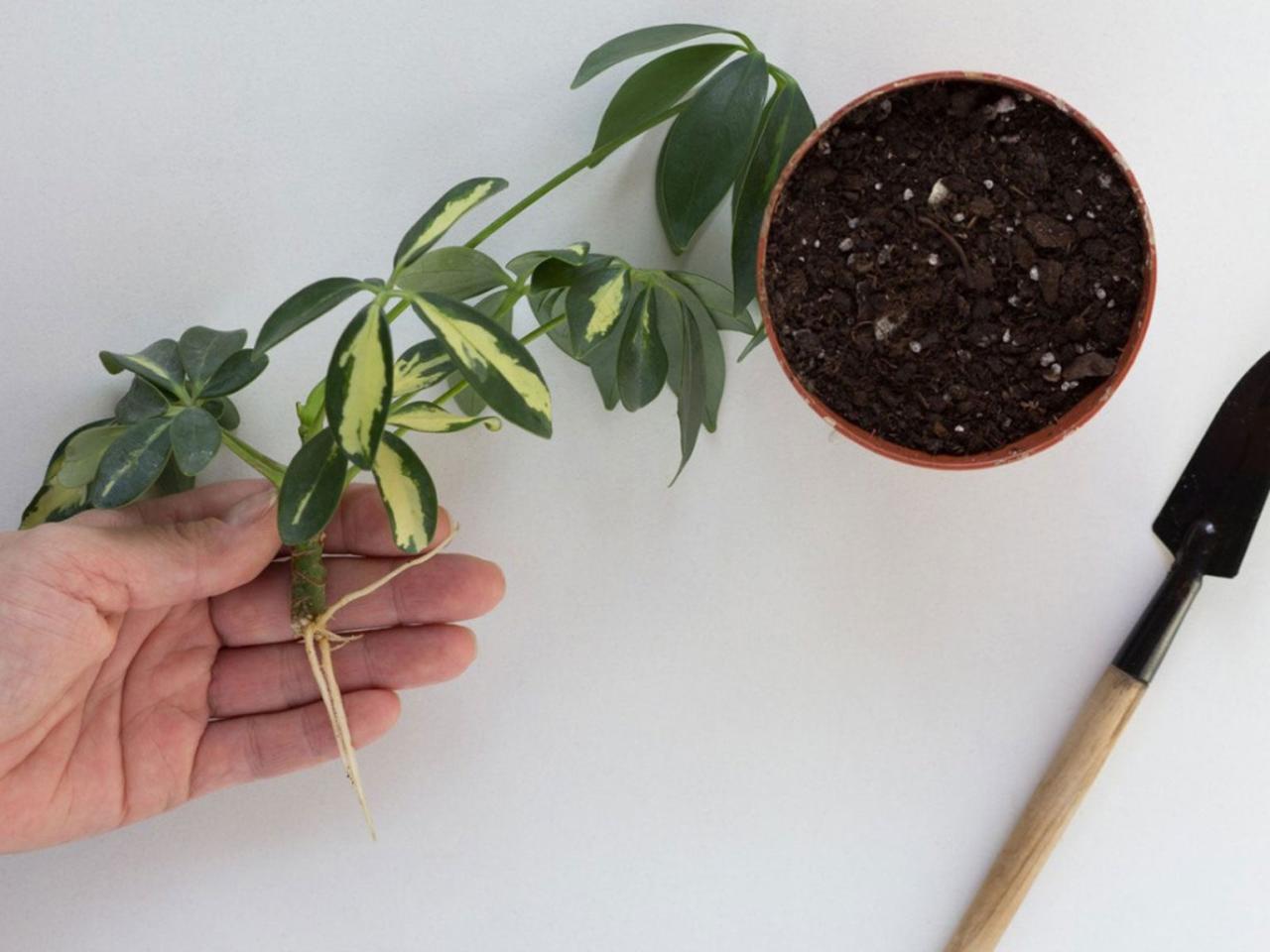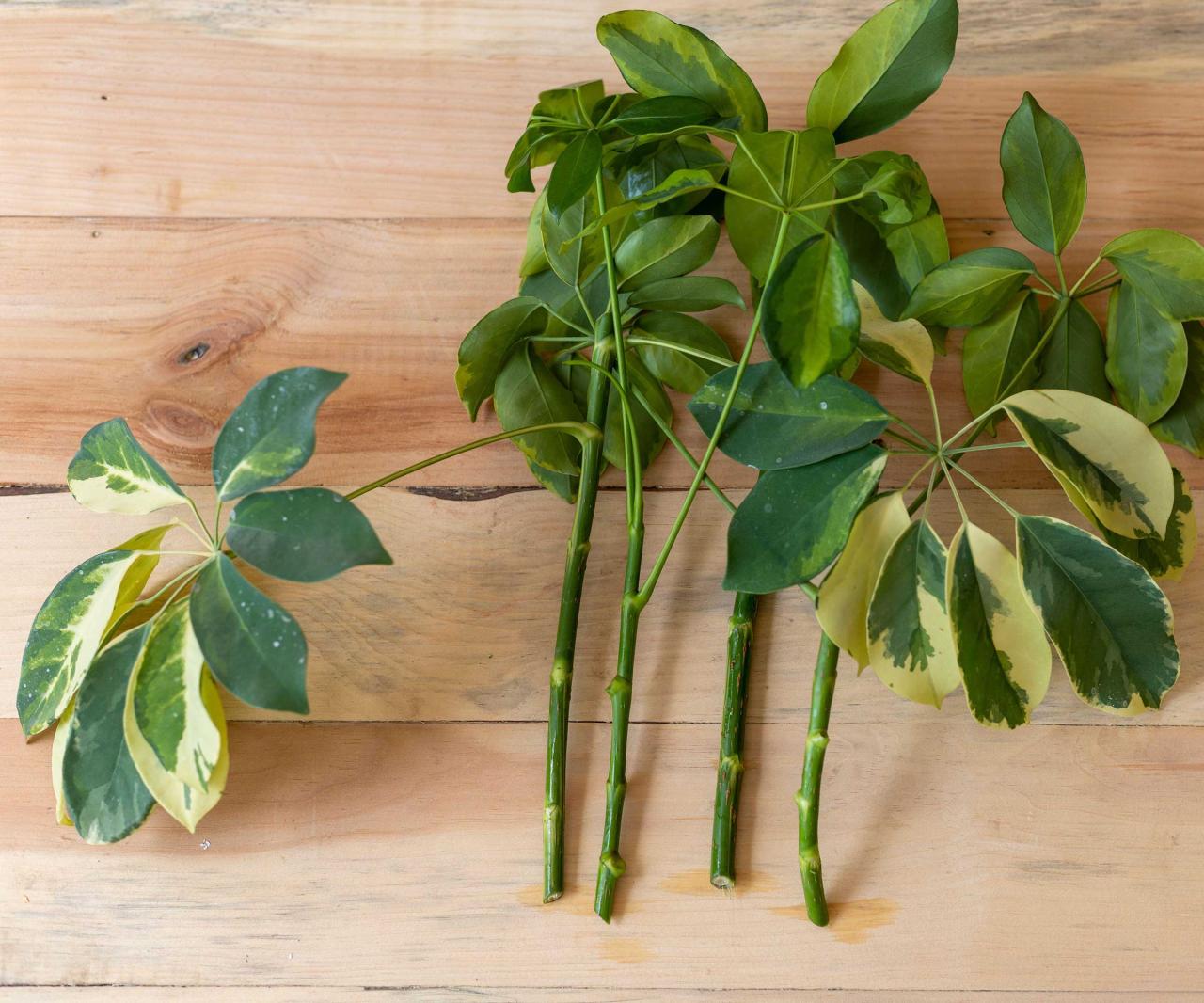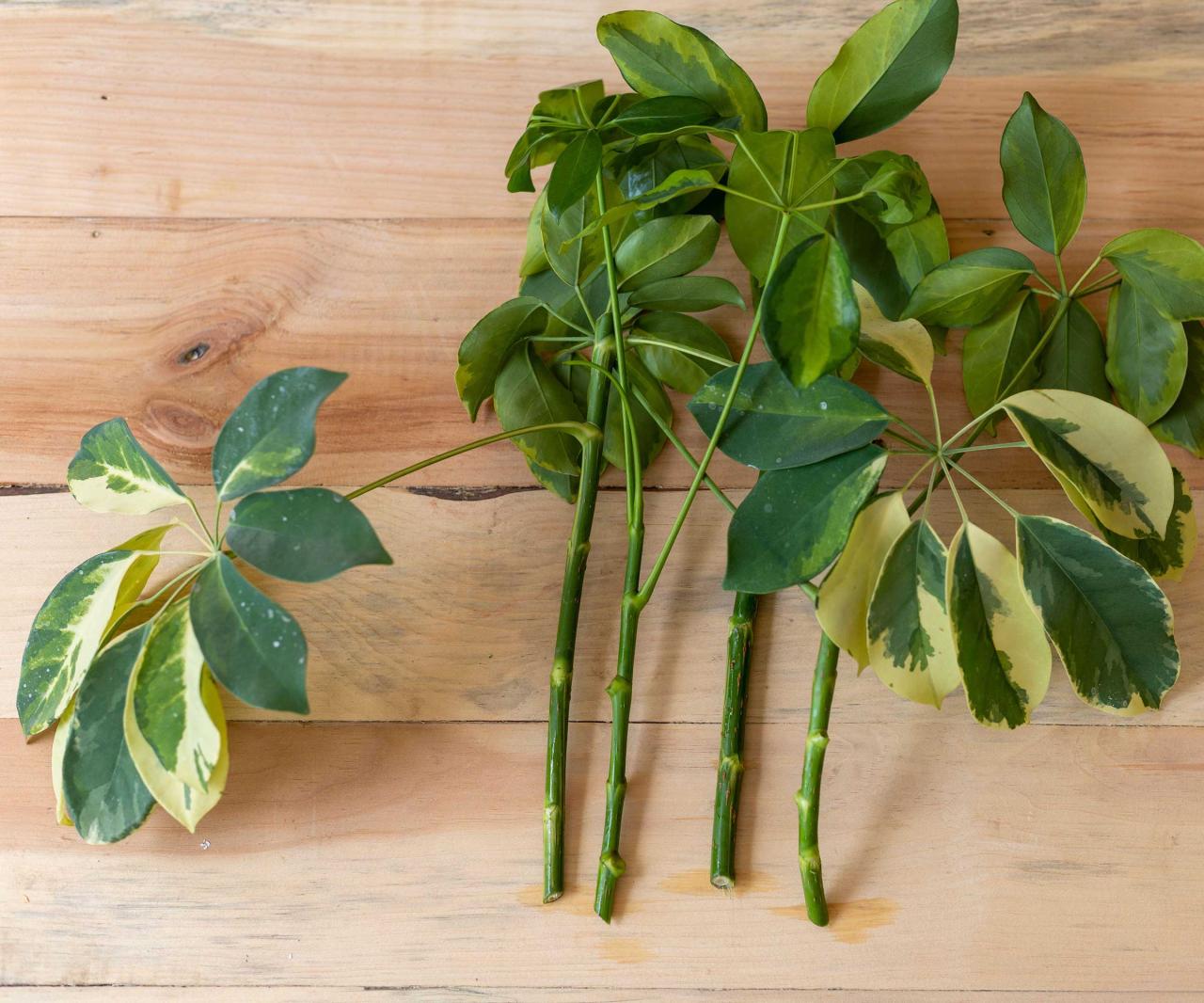The Essential Tips for Effective Schefflera Propagation at Home: Want to expand your indoor jungle with the lush foliage of a Schefflera plant? Propagation is a rewarding and cost-effective way to grow new plants from cuttings or air layering.
This guide will provide you with the essential steps for successful Schefflera propagation, ensuring you have a thriving collection of these elegant plants.
From understanding the different propagation methods to mastering the art of rooting and transplanting, this comprehensive guide covers all aspects of Schefflera propagation, providing you with the knowledge and confidence to create new life from your existing plants. Whether you’re a seasoned plant enthusiast or a beginner, this guide will equip you with the tools and techniques for successful Schefflera propagation at home.
Understanding Schefflera Propagation

Schefflera propagation, the process of creating new Schefflera plants from existing ones, is a rewarding and achievable endeavor for home gardeners. This process allows you to expand your collection of these attractive plants, share them with others, or simply enjoy the satisfaction of nurturing new life.
There are several methods for Schefflera propagation, each with its own set of advantages and disadvantages.
Schefflera Propagation Methods
Schefflera propagation can be achieved through various methods, each with its own set of advantages and disadvantages.
- Cuttings: This is the most common method, involving taking stem cuttings from a healthy Schefflera plant and rooting them in a suitable medium. This method is generally straightforward and produces new plants relatively quickly.
- Air Layering: Air layering involves encouraging root growth on a stem while it is still attached to the parent plant.
Similar to the ease of propagating the Mother of Thousands, which, as revealed in The Secret to Propagating Mother of Thousands Revealed! , relies on the plant’s natural tendency to produce plantlets, Schefflera propagation also offers a rewarding experience. Mastering a few essential techniques, such as using stem cuttings or air layering, can lead to successful propagation of these popular houseplants.
This method is particularly useful for propagating Schefflera plants that are difficult to root from cuttings.
- Seeds: Schefflera plants can also be propagated from seeds, although this method is less common. This method requires more time and effort than cuttings or air layering.
Advantages and Disadvantages of Schefflera Propagation Methods
- Cuttings:
- Advantages: This method is generally easy and fast, requiring minimal equipment and resources.
- Disadvantages: Cuttings may not always root successfully, and some varieties may be more challenging to root than others.
- Air Layering:
- Advantages: This method offers a high success rate and is ideal for propagating Schefflera plants that are difficult to root from cuttings.
- Disadvantages: This method can be more time-consuming than cuttings and requires a bit more effort.
- Seeds:
- Advantages: This method allows you to produce a large number of new plants, and the resulting plants are often more vigorous than those grown from cuttings.
- Disadvantages: This method is time-consuming and can be challenging, as Schefflera seeds can be slow to germinate.
Selecting Healthy Schefflera Plants for Propagation
Choosing a healthy Schefflera plant for propagation is crucial for maximizing your chances of success. Here are some factors to consider:
- Healthy Growth: Look for a plant that is actively growing with lush, green leaves. Avoid plants that show signs of stress, such as wilting, yellowing leaves, or pest infestations.
- Mature Stems: For cuttings, choose stems that are at least 6-8 inches long and have several nodes (the points where leaves emerge).
- Free of Pests and Diseases: Ensure that the plant is free of any visible pests or signs of disease, as these can negatively impact the propagation process.
Propagation by Cuttings
Propagating Schefflera plants through cuttings is a simple and effective method that allows you to create new plants from existing ones. This method involves taking a portion of the stem from the parent plant and encouraging it to develop roots.
This method offers a cost-effective way to expand your Schefflera collection and enjoy the beauty of these plants.
Preparing the Cuttings
Preparing the cuttings is a crucial step in ensuring successful propagation. The process involves selecting the right stem and making the necessary cuts to stimulate root growth. The best time to take Schefflera cuttings is during the spring or summer when the plant is actively growing.
Choose healthy, mature stems that are about 6-8 inches long. Look for stems that are free of diseases and pests.To prepare the cutting, use a sharp, sterilized knife or pruning shears to make a clean, angled cut just below a node.
A node is the point on the stem where leaves or branches grow. Remove the leaves from the bottom 2-3 inches of the cutting. This will prevent the leaves from rotting and will encourage root development.
Rooting Mediums for Schefflera Cuttings
The rooting medium plays a significant role in the success of Schefflera propagation. It provides the necessary support and moisture for the cuttings to develop roots. Here are some of the best rooting mediums for Schefflera cuttings:
- Perlite:Perlite is a lightweight, porous material that provides excellent drainage and aeration. It is an ideal choice for Schefflera cuttings as it helps to prevent root rot.
- Vermiculite:Vermiculite is another popular rooting medium that is known for its ability to retain moisture. It also provides good aeration, which is essential for healthy root development.
- Peat Moss:Peat moss is a natural, organic material that is often used as a rooting medium. It is known for its ability to retain moisture and provide a good environment for root growth.
- Coco Coir:Coco coir is a sustainable alternative to peat moss. It is made from the fibers of coconut husks and provides excellent drainage and aeration.
- Seed Starting Mix:Seed starting mix is a commercially available mixture that is designed for starting seeds and cuttings. It typically contains a blend of peat moss, vermiculite, and other ingredients that promote root development.
Rooting Schefflera Cuttings

Once you have prepared your Schefflera cuttings, the next step is to root them. This involves providing the right environment for root development. There are two main methods for rooting Schefflera cuttings: water propagation and soil propagation.
Water Propagation
Water propagation is a simple and effective method for rooting Schefflera cuttings. It involves placing the cuttings in a container of water and allowing them to develop roots. Here’s how to water propagate Schefflera cuttings:
- Fill a clean glass or jar with water.
- Place the cuttings in the water, ensuring that the nodes (the areas where leaves grow) are submerged.
- Change the water every few days to prevent bacterial growth.
- Keep the cuttings in a bright, indirect light location, avoiding direct sunlight.
- Monitor the cuttings regularly for signs of root development, which may take several weeks.
Soil Propagation
Soil propagation involves planting the cuttings directly into a suitable potting mix. This method can be slightly more challenging than water propagation, but it offers a higher success rate.Here’s how to soil propagate Schefflera cuttings:
- Fill a pot with a well-draining potting mix, such as a mixture of peat moss, perlite, and vermiculite.
- Make a small hole in the potting mix using a pencil or your finger.
- Insert the cutting into the hole, ensuring that the nodes are buried in the soil.
- Gently firm the soil around the cutting to secure it in place.
- Water the cutting thoroughly, making sure the soil is moist but not soggy.
- Place the pot in a bright, indirect light location, avoiding direct sunlight.
- Maintain a warm temperature, ideally between 70-75°F (21-24°C).
- Keep the soil moist but not wet.
Creating a Suitable Environment for Root Development
Regardless of the method you choose, it’s important to create a suitable environment for root development. This involves maintaining the right levels of humidity, temperature, and light.
- Humidity:Schefflera cuttings prefer high humidity. You can increase humidity by placing the cuttings in a humid environment, such as a greenhouse or a plastic bag. Alternatively, you can mist the cuttings regularly with water.
- Temperature:Schefflera cuttings root best in warm temperatures, ideally between 70-75°F (21-24°C). Avoid placing them in cold or drafty areas.
- Light:Schefflera cuttings need bright, indirect light. Avoid placing them in direct sunlight, which can scorch the leaves.
Monitoring the Rooting Process
Once you have planted your cuttings, it’s important to monitor them regularly for signs of root development.
- Water Propagation:Look for new root growth emerging from the base of the cutting. You can also gently tug on the cutting to check for resistance, indicating that roots have formed.
- Soil Propagation:Signs of successful rooting include new leaf growth and a general healthy appearance of the cutting. You can also gently tug on the cutting to check for resistance, indicating that roots have formed.
Transplanting Rooted Cuttings

Once your Schefflera cuttings have developed a healthy root system, it’s time to transplant them into individual pots. This process allows the young plants to establish themselves and grow independently.
Choosing the Right Potting Mix and Pot Size
Selecting the appropriate potting mix and pot size is crucial for the successful transplanting of rooted Schefflera cuttings. The potting mix should be well-draining to prevent root rot and provide adequate aeration. A mixture of peat moss, perlite, and vermiculite is commonly recommended.
- Potting Mix:A well-draining potting mix is essential for Schefflera plants. A mixture of peat moss, perlite, and vermiculite is ideal. Peat moss retains moisture, perlite improves drainage, and vermiculite provides aeration.
- Pot Size:The pot size should be slightly larger than the root ball of the cutting. A 4-inch pot is generally suitable for newly rooted Schefflera cuttings. A larger pot may lead to excessive moisture retention, which can harm the roots.
Transplanting Rooted Schefflera Cuttings
Transplanting rooted Schefflera cuttings into individual pots is a straightforward process. Here’s a step-by-step guide:
- Prepare the Pot:Fill the pot with the chosen potting mix, leaving about an inch of space at the top. Gently moisten the mix with water.
- Remove the Cutting from the Rooting Medium:Carefully remove the cutting from the rooting medium, ensuring that the root ball remains intact. Gently loosen any tangled roots.
- Place the Cutting in the Pot:Place the cutting in the center of the pot, ensuring that the top of the root ball is level with the soil surface. Fill any gaps around the root ball with additional potting mix.
- Water Thoroughly:Water the newly transplanted cutting thoroughly to settle the potting mix and provide adequate moisture. Avoid overwatering.
- Place in Indirect Light:Position the potted cutting in a location with bright, indirect light. Avoid direct sunlight, which can scorch the leaves.
Care Requirements for Newly Transplanted Schefflera Plants
Newly transplanted Schefflera plants require special care to help them establish themselves in their new environment.
- Watering:Water the newly transplanted Schefflera plant when the top inch of soil feels dry. Avoid overwatering, as this can lead to root rot. Allow the soil to dry slightly between waterings.
- Fertilization:Fertilize the plant with a balanced liquid fertilizer diluted to half strength every two weeks during the growing season. Avoid fertilizing during the winter months when the plant is dormant.
- Humidity:Schefflera plants prefer moderate humidity. Misting the leaves regularly or placing the pot on a humidity tray can help increase humidity levels.
Propagation by Air Layering
Air layering is a method of propagation that involves encouraging roots to develop on a stem while it is still attached to the parent plant. This technique is particularly effective for Schefflera plants, allowing you to create new plants from existing branches without having to take cuttings.
Preparing the Branch for Air Layering
Preparing the branch for air layering involves creating a wound on the stem to stimulate root growth. This is done by making a cut into the bark, exposing the cambium layer where roots will form.
- Select a healthy branch that is at least 1/2 inch in diameter and has a few leaves. Avoid branches that are too thin or too thick, as they may not root successfully.
- Use a sharp knife or pruning shears to make a clean, horizontal cut through the bark, about 1 inch long. Be sure to cut through the bark, but not into the wood of the stem.
- Gently scrape away the bark above and below the cut to expose the cambium layer. This will help to promote root development.
Applying Rooting Hormone and Covering the Rooting Area
Once the branch is prepared, you will need to apply rooting hormone and cover the wound to create a humid environment that encourages root growth.
- Apply a generous amount of rooting hormone powder to the exposed cambium layer. This will help to stimulate root development.
- Wrap the cut area with a moist sphagnum moss, ensuring it is securely in place. You can use a plastic wrap or aluminum foil to secure the moss. The moss should be kept consistently moist to promote root growth.
- Wrap the entire area with plastic wrap or aluminum foil, sealing the edges tightly. This will create a humid environment that will help the roots to develop. Ensure that the plastic wrap or foil is not too tight, as this could restrict the flow of nutrients to the branch.
Caring for Air Layered Schefflera
Once you’ve successfully air layered your Schefflera, it’s crucial to provide the right care to ensure healthy root development and a smooth transition to a potted plant.
Mastering Schefflera propagation involves understanding the plant’s needs and employing the right techniques. Similar to the successful propagation of Mother of Thousands, as detailed in Transform Your Plant Collection: Propagate Mother of Thousands Like a Pro , Schefflera propagation thrives with the right tools and knowledge.
You can create a thriving collection of these beautiful plants, ensuring a flourishing green space within your home.
Monitoring Root Development
Regularly checking the rooting process is essential to determine if the air layering technique has been successful. The key indicator is the presence of healthy roots. Here are some signs of successful root development:
- Visible roots:You should observe new roots growing through the rooting medium. They will appear white or light brown and may even be visible through the plastic wrap.
- Firmness:The air-layered portion of the stem should feel firm and stable when gently tugged, indicating the roots are securely anchoring the plant.
- New growth:The presence of new growth above the air layering site is a positive sign, suggesting the plant is receiving sufficient nutrients and water through the newly formed roots.
Separating the Air Layered Plant, The Essential Tips for Effective Schefflera Propagation at Home
Once the roots have developed sufficiently, typically after 4-6 weeks, you can carefully separate the air layered plant from the parent plant.
- Cut the stem:Use a sharp, sterilized knife or pruning shears to cut the stem below the air layering site. This will separate the new plant from the parent.
- Remove the rooting medium:Gently remove the plastic wrap and the rooting medium from the air layered section. Be careful not to damage the developing roots.
- Potting the new plant:Pot the newly separated plant in a pot slightly larger than the root ball. Use a well-draining potting mix and water thoroughly.
Troubleshooting Common Problems: The Essential Tips For Effective Schefflera Propagation At Home
While Schefflera propagation is generally straightforward, certain issues can arise during the process. Identifying and addressing these problems promptly is crucial for successful propagation. Understanding the common challenges and their solutions can help you overcome obstacles and achieve healthy, thriving Schefflera plants.
Root Rot
Root rot is a common problem in Schefflera propagation, often caused by overwatering or poorly draining soil. When roots are constantly exposed to excess moisture, they become susceptible to fungal infections that can damage and ultimately kill the roots.
- Symptoms:Wilting, yellowing leaves, soft or mushy roots, foul odor from the soil.
- Solutions:
- Remove the cutting from the soil and inspect the roots. If the roots are soft, mushy, or discolored, cut away the damaged portions.
- Repot the cutting in fresh, well-draining potting mix. Ensure the pot has drainage holes to prevent waterlogging.
- Water the cutting only when the top inch of soil is dry to prevent overwatering.
- Consider using a fungicide to treat the cutting if root rot is suspected.
- Prevention:
- Use a well-draining potting mix specifically designed for cuttings.
- Water the cutting only when the top inch of soil is dry.
- Ensure the pot has drainage holes to allow excess water to escape.
- Avoid overwatering, which can lead to root rot.
Fungal Infections
Fungal infections can also occur during Schefflera propagation, especially if the cuttings are kept in humid conditions or are exposed to contaminated soil. These infections can cause leaf spots, stem rot, and other damage.
- Symptoms:Brown or black spots on leaves, stem rot, wilting, and stunted growth.
- Solutions:
- Remove infected leaves or stems to prevent the spread of the infection.
- Treat the cutting with a fungicide specifically designed for plant diseases.
- Improve air circulation around the cutting to reduce humidity levels.
- Ensure the cutting is in well-draining soil and avoid overwatering.
- Prevention:
- Use sterilized soil and tools to prevent the introduction of fungal spores.
- Avoid overwatering and ensure the cutting is in a well-ventilated area.
- Treat the cutting with a fungicide as a preventative measure, especially if fungal infections are common in your area.
Pests
Schefflera cuttings can be susceptible to various pests, such as aphids, mealybugs, and spider mites. These pests can damage the leaves, stems, and roots, hindering growth and potentially killing the cutting.
- Symptoms:Small insects on the leaves, stems, or roots, sticky residue on leaves, webbing, and discolored leaves.
- Solutions:
- Isolate the infected cutting to prevent the spread of pests to other plants.
- Treat the cutting with an insecticidal soap or horticultural oil, following the manufacturer’s instructions.
- Manually remove pests with a cotton swab dipped in rubbing alcohol.
- Consider using a systemic insecticide if the infestation is severe.
- Prevention:
- Inspect new cuttings for pests before introducing them to your collection.
- Maintain good hygiene practices, such as cleaning tools and removing fallen leaves and debris from around the cutting.
- Use a preventative insecticide if pests are common in your area.
Creating a Table of Essential Tips
A well-organized table can serve as a handy reference for anyone looking to propagate Schefflera plants at home. It condenses the key steps, care requirements, and troubleshooting tips into an easily digestible format. This table aims to provide a comprehensive overview, making the propagation process more accessible and successful.
Essential Tips for Effective Schefflera Propagation
Propagation Method |
Care Requirements |
Troubleshooting Tips |
Additional Tips |
|---|---|---|---|
Cuttings |
|
|
|
Air Layering |
|
|
|
Conclusive Thoughts
Armed with these essential tips, you’ll be well on your way to successfully propagating Schefflera plants at home. Remember, patience and a little TLC are key to nurturing new growth. With careful attention to detail, you’ll soon be enjoying the beauty of your own propagated Schefflera plants, adding a touch of tropical elegance to your indoor space.
Happy propagating!
Essential FAQs
What is the best time of year to propagate Schefflera plants?
The best time to propagate Schefflera plants is during the spring or summer when the plant is actively growing. The warm temperatures and longer days promote root development.
Can I propagate Schefflera plants from seed?
While it’s possible to propagate Schefflera plants from seed, it’s a less common method. Seeds can be slow to germinate and may not produce plants that are identical to the parent plant.
How do I know if my Schefflera cuttings have rooted?
You can check for signs of new growth, such as new leaves or roots emerging from the base of the cutting. You can also gently tug on the cutting to see if it feels secure.
What should I do if my Schefflera cuttings are not rooting?
If your cuttings are not rooting, check the rooting medium for moisture and adjust as needed. Ensure the environment is warm and humid, and consider using a rooting hormone to encourage root development.
